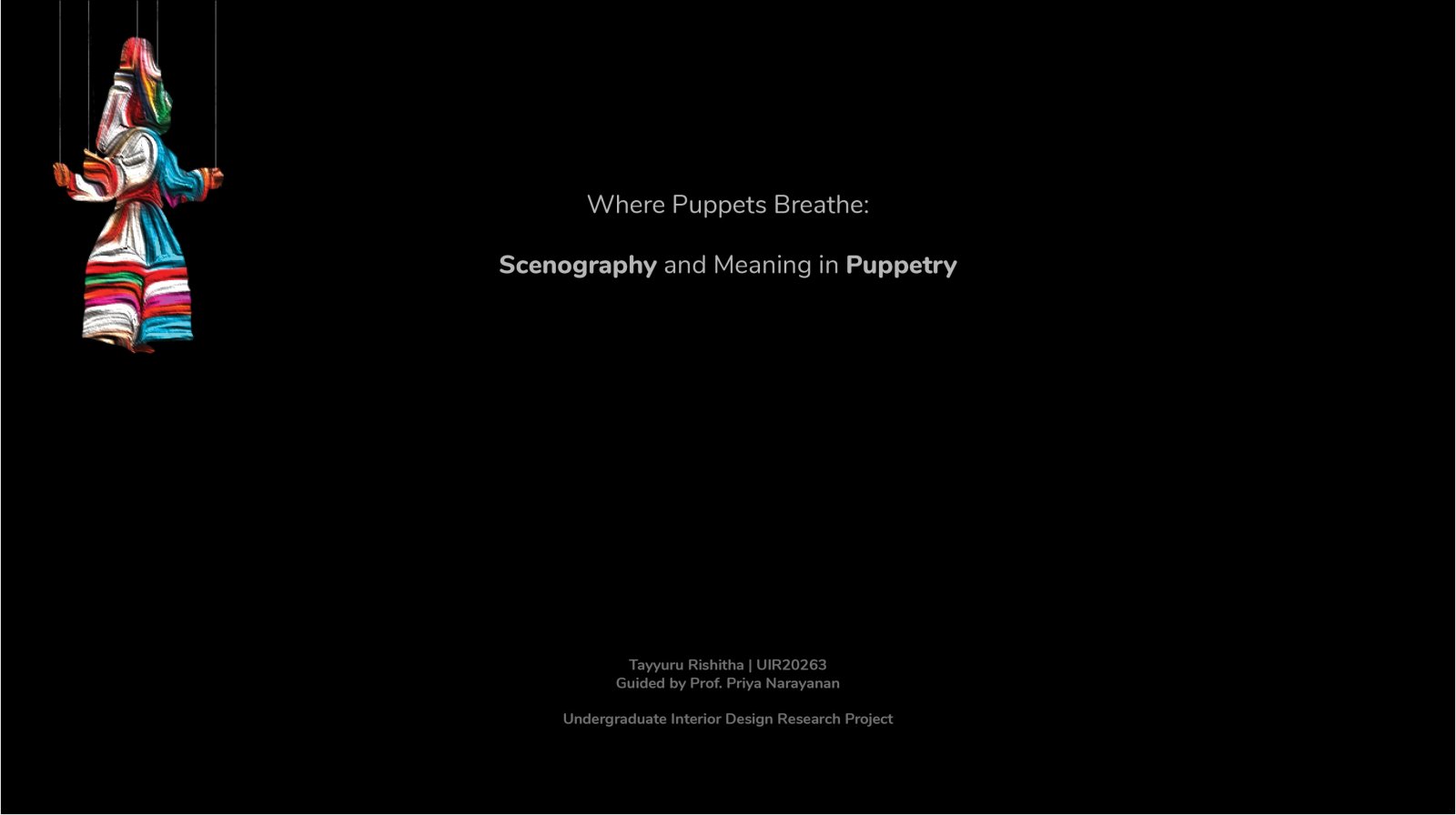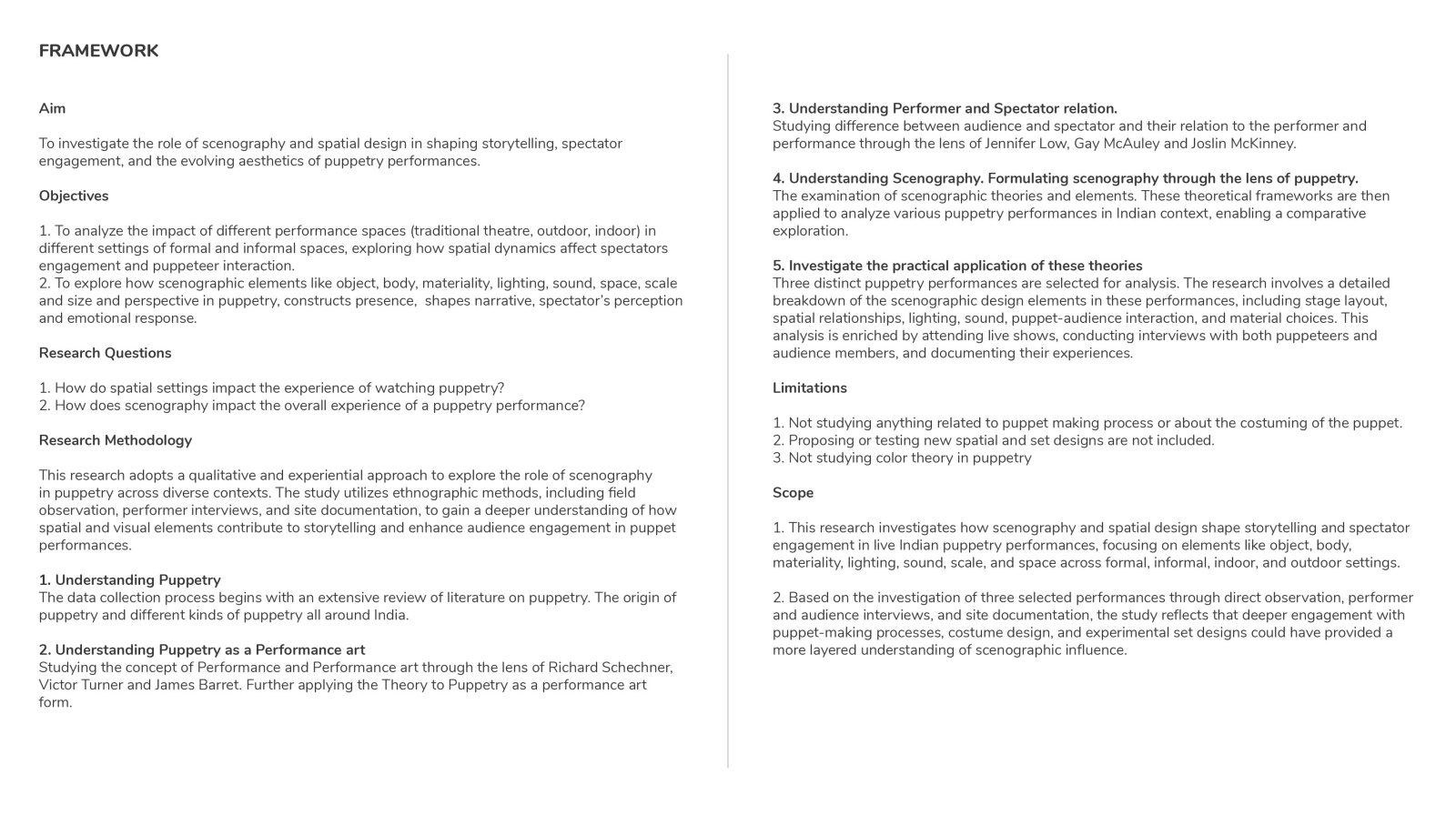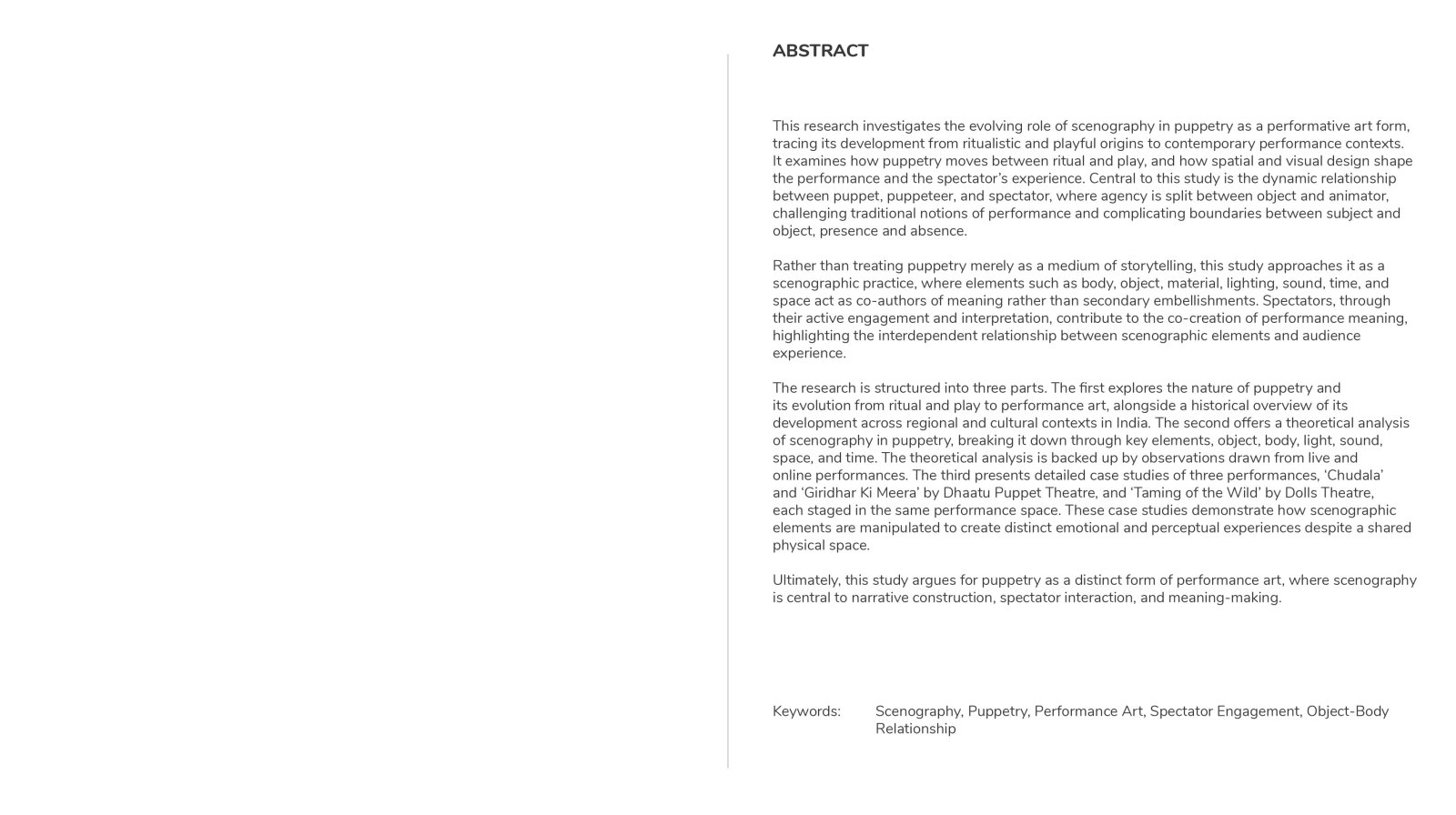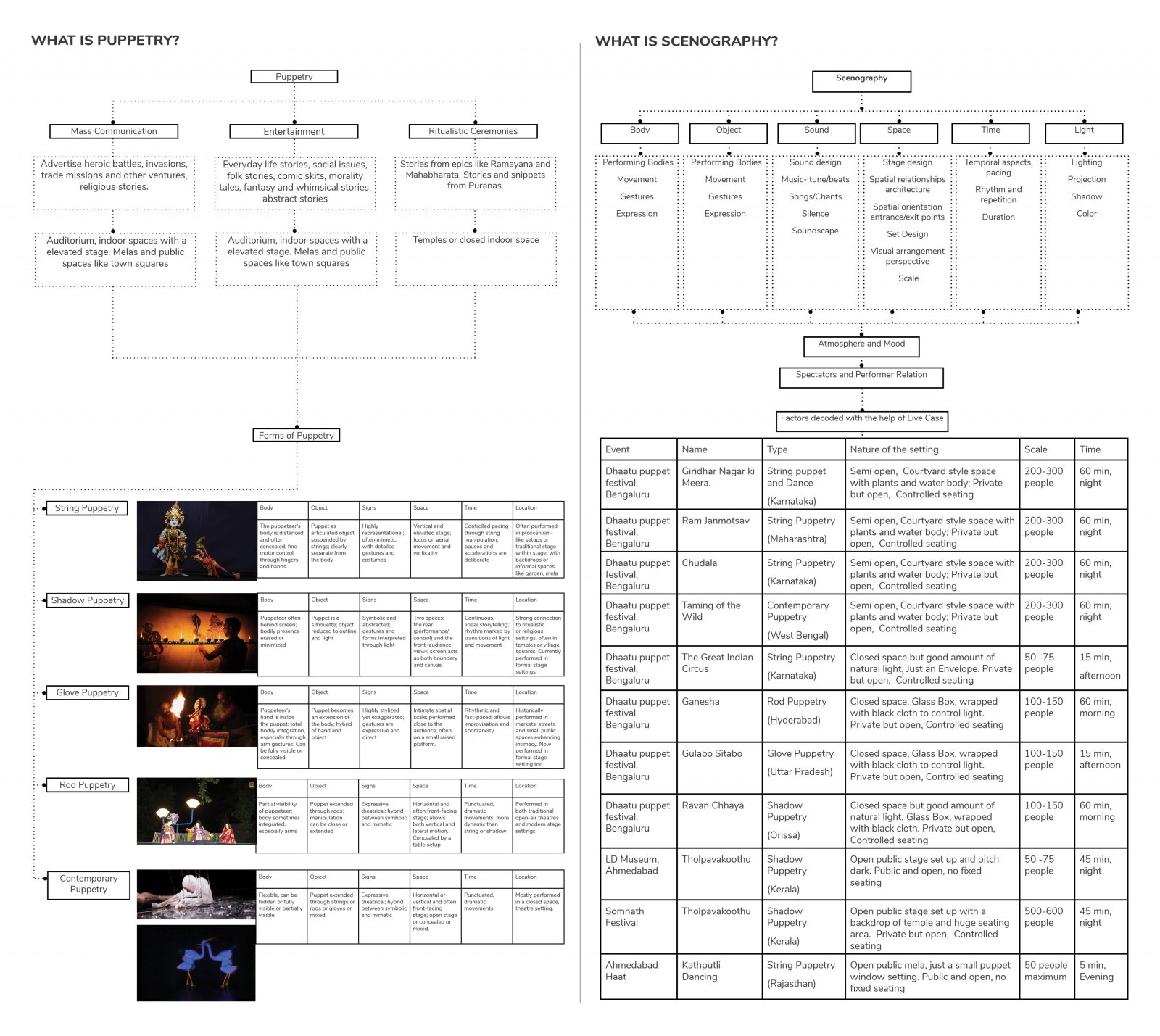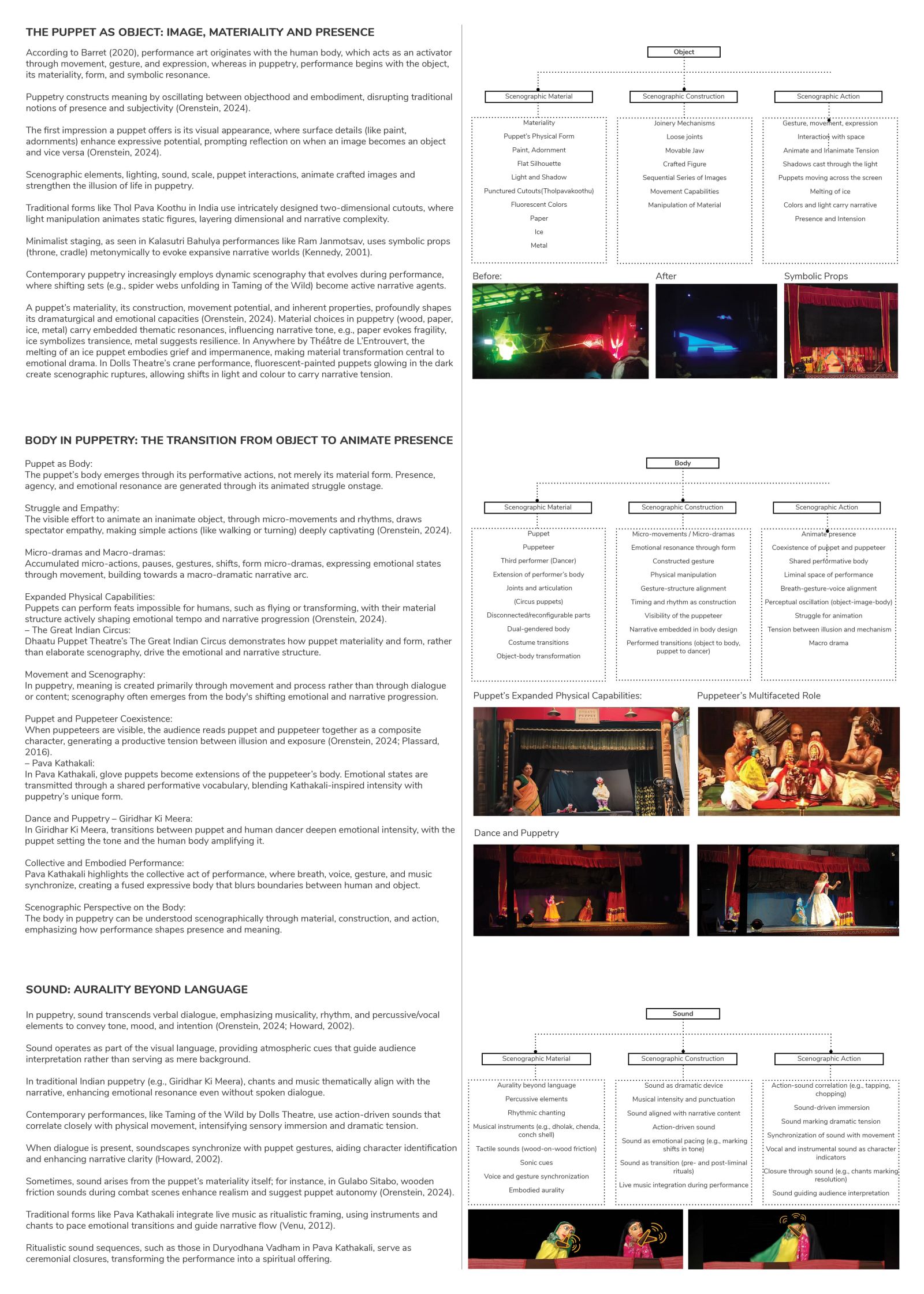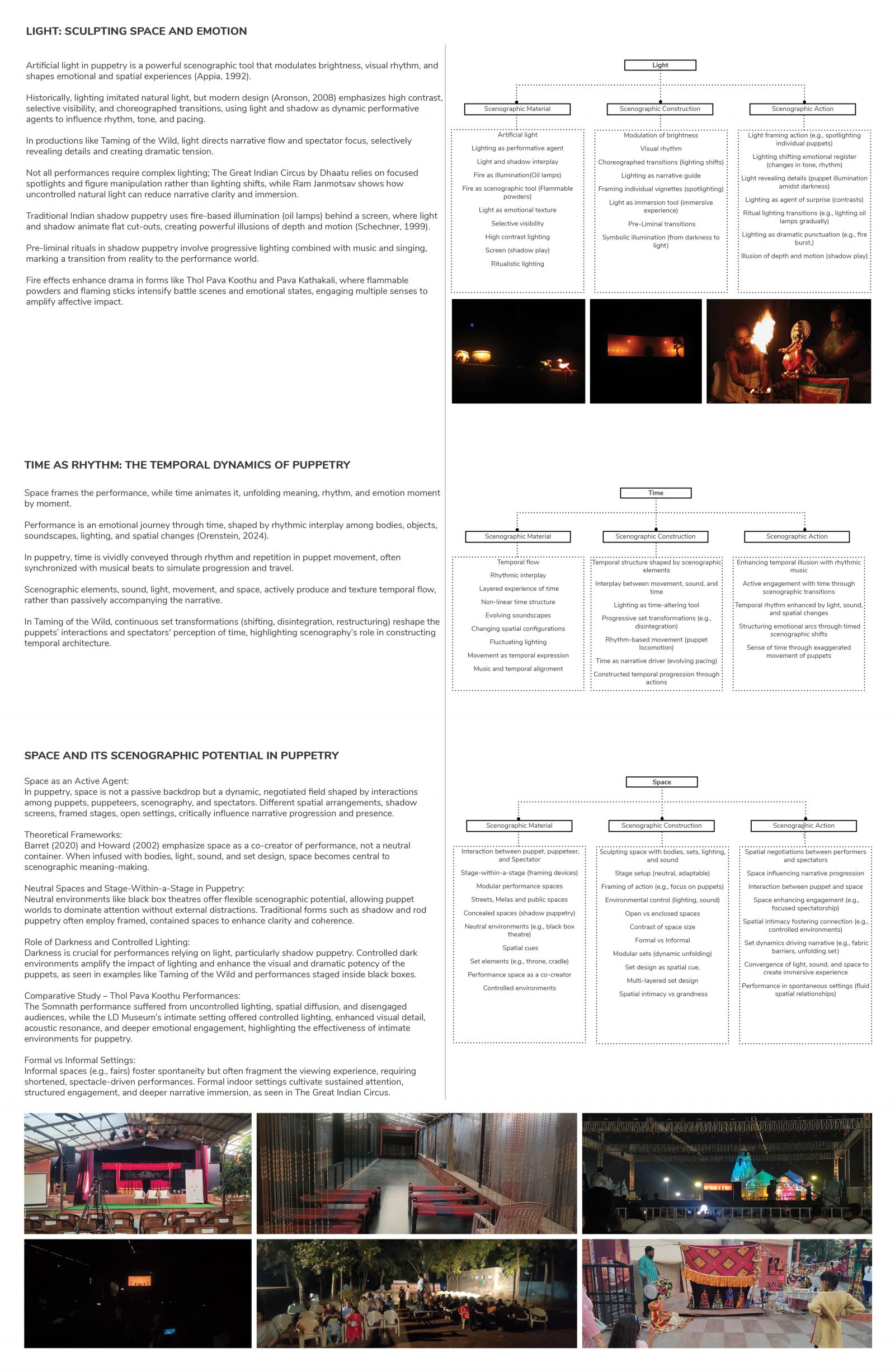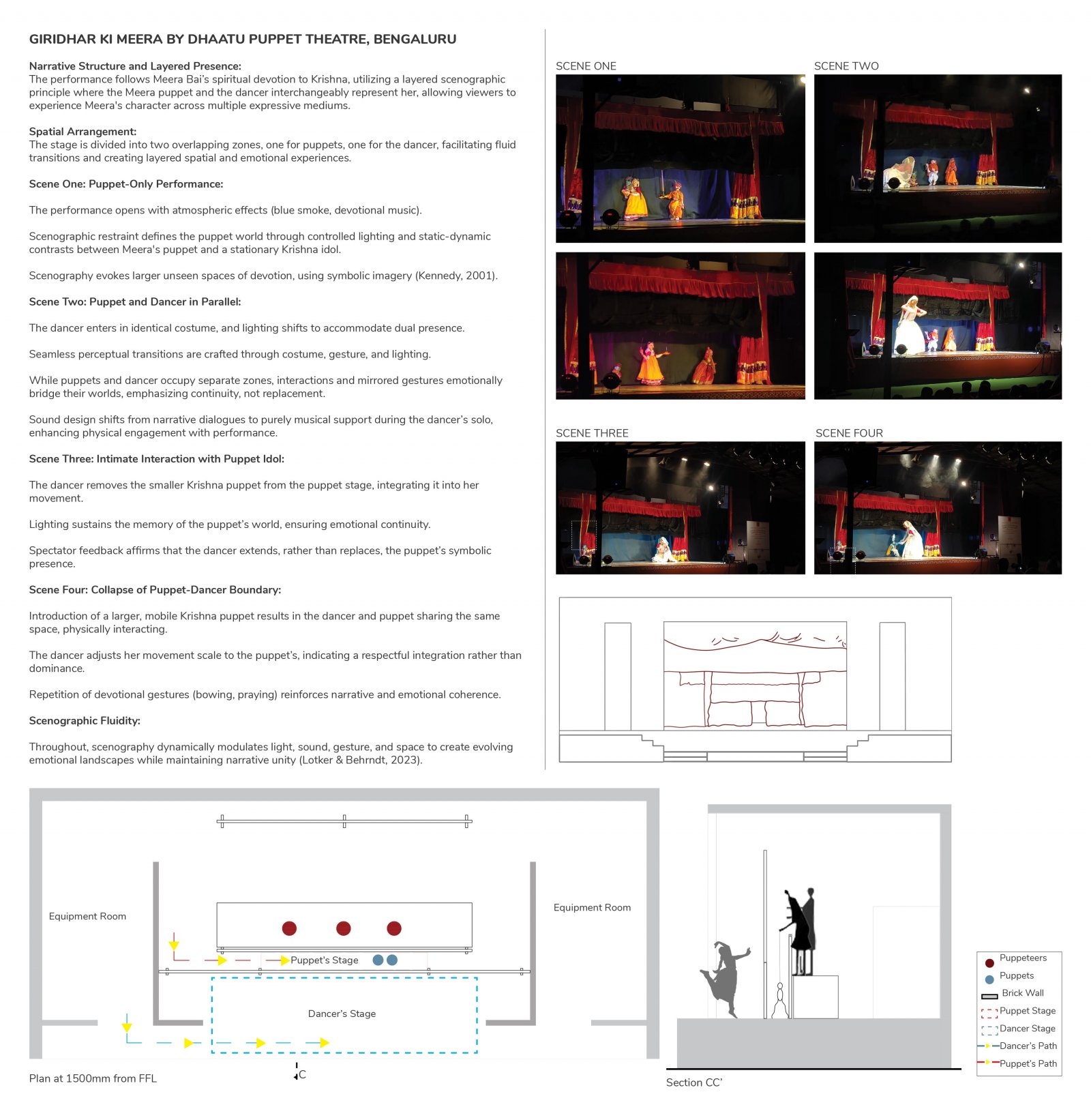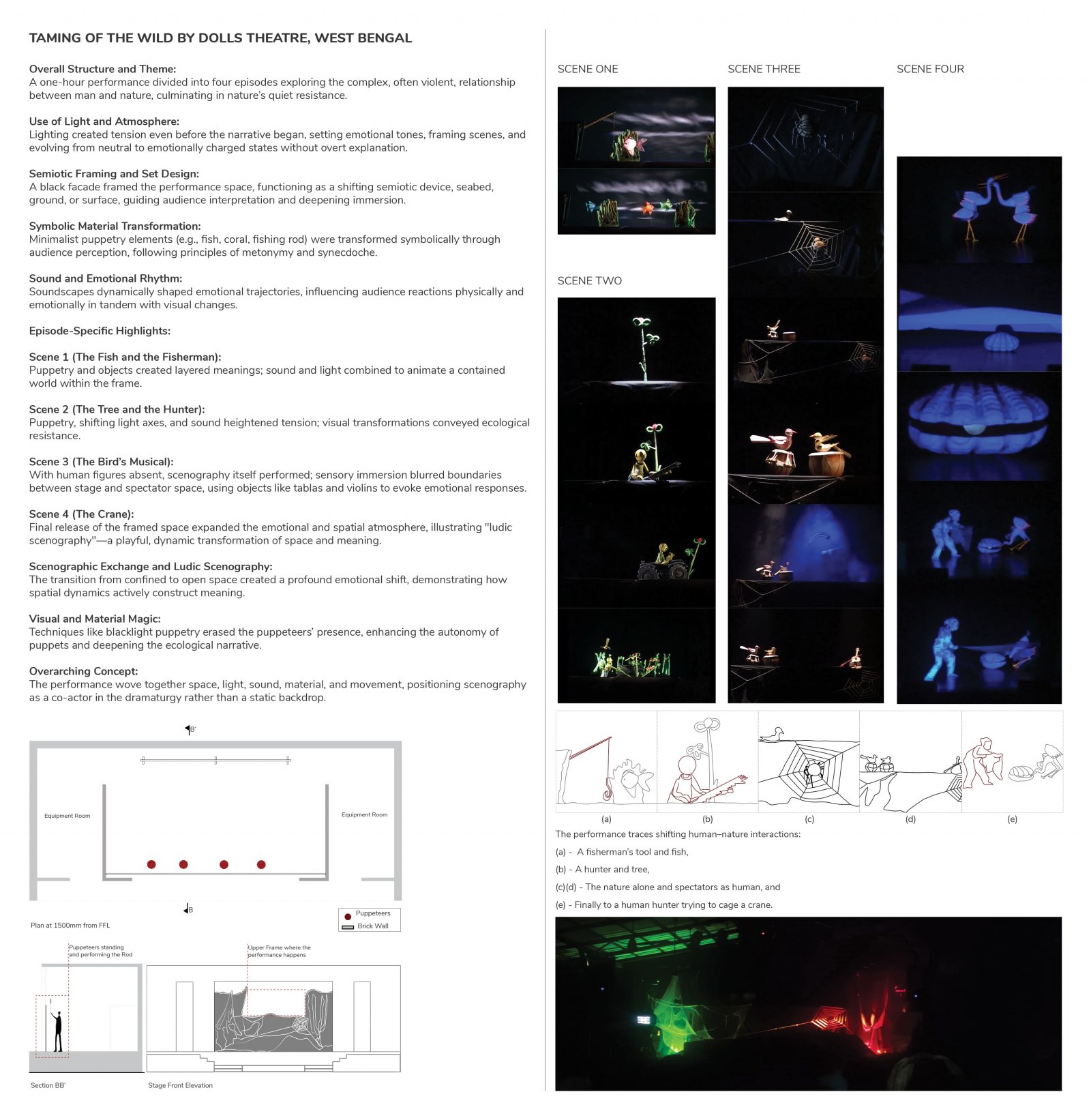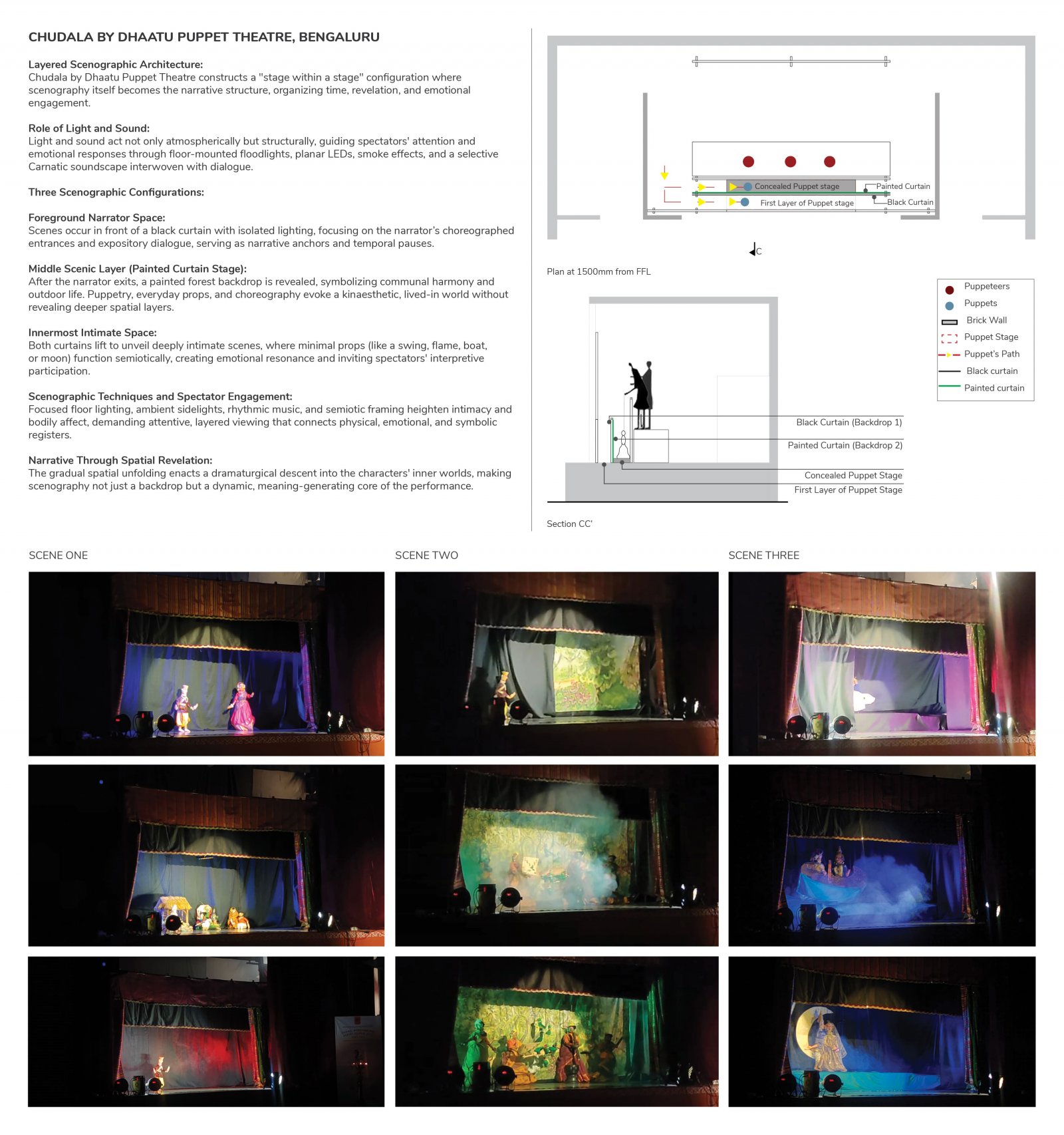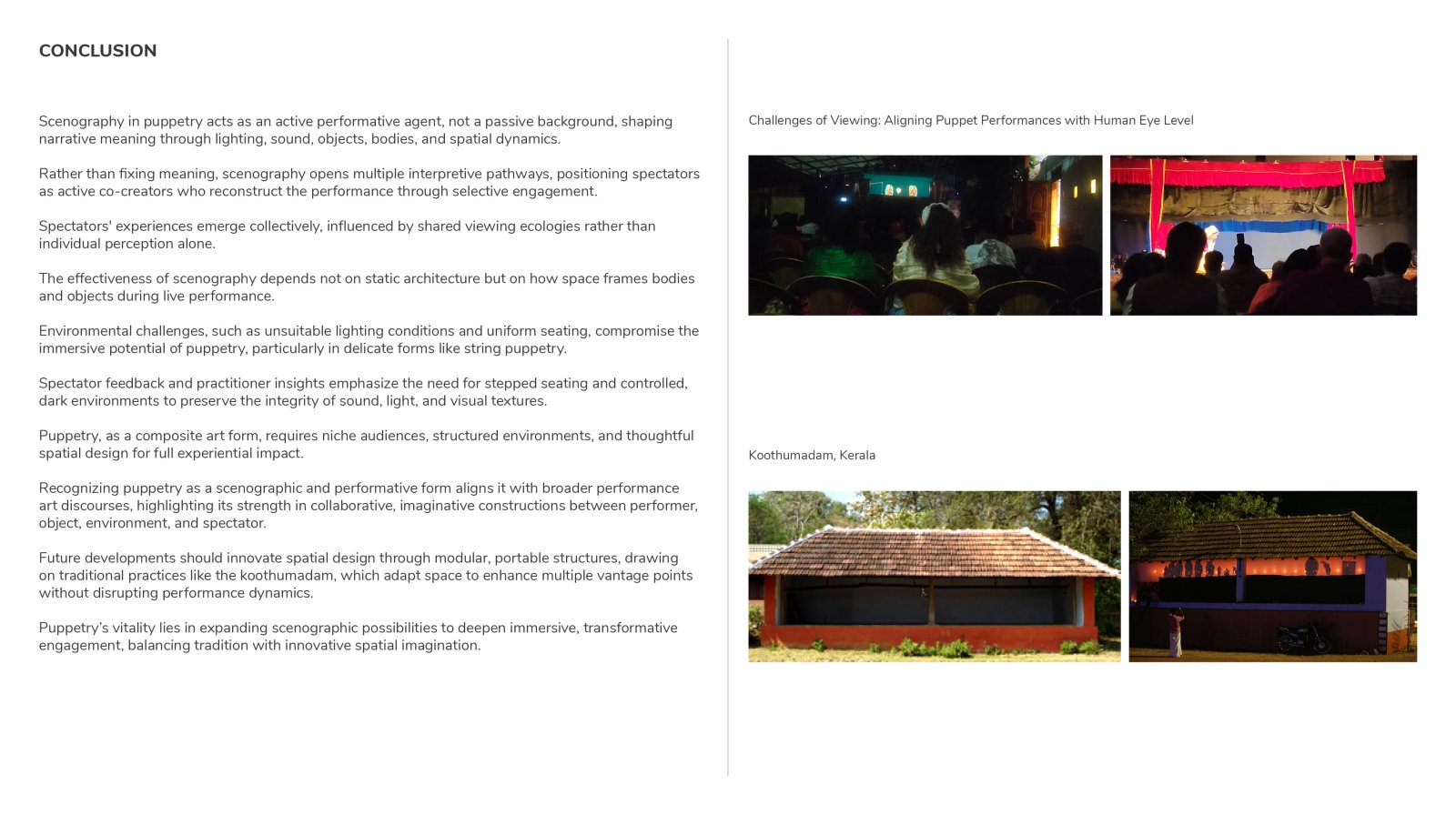Your browser is out-of-date!
For a richer surfing experience on our website, please update your browser. Update my browser now!
For a richer surfing experience on our website, please update your browser. Update my browser now!
This research decodes puppetry as a scenographic and performative art, where objects, bodies, sound, light, and space co-author meaning. Tracing its evolution from ritual and play, the study examines how scenography actively shapes performance and spectatorship, challenging rigid boundaries between object and animator. Through theoretical analysis and live case studies, it reveals how scenographic elements guide perception, evoke emotional rhythm, and enable spectators as co-creators of meaning. Ultimately, it argues that puppetry’s power lies not in fixed storytelling, but in building dynamic, imaginative architectures between puppet, performer, space, and spectators, reshaping how performance and perception intertwine.
View Additional Work